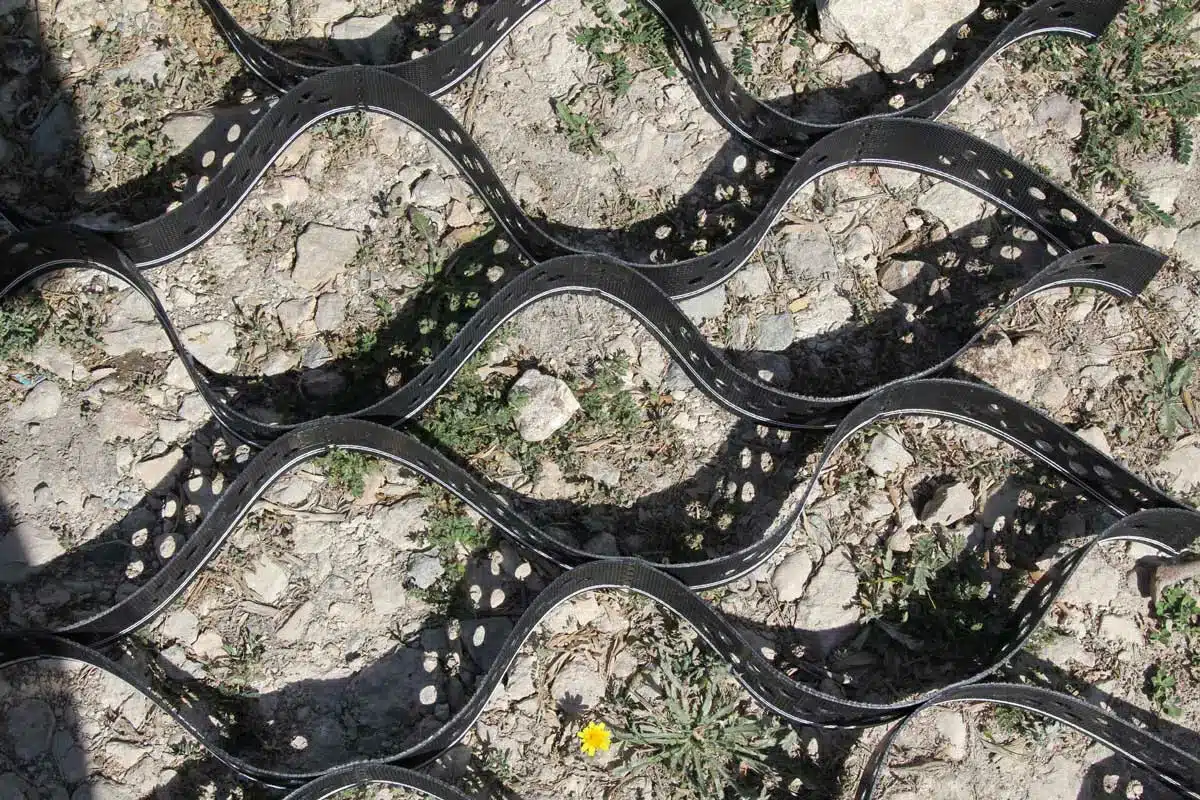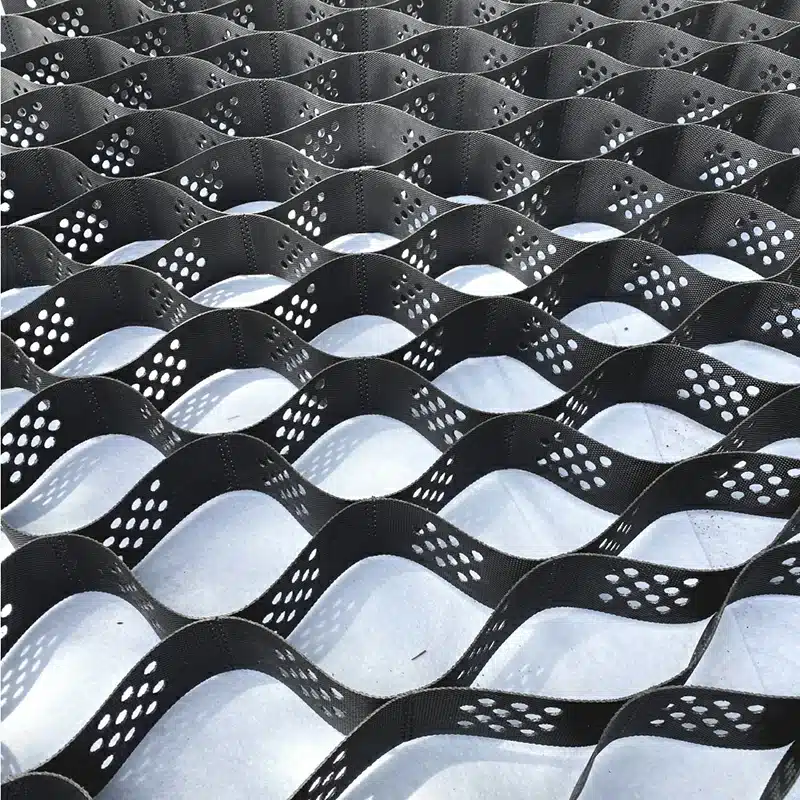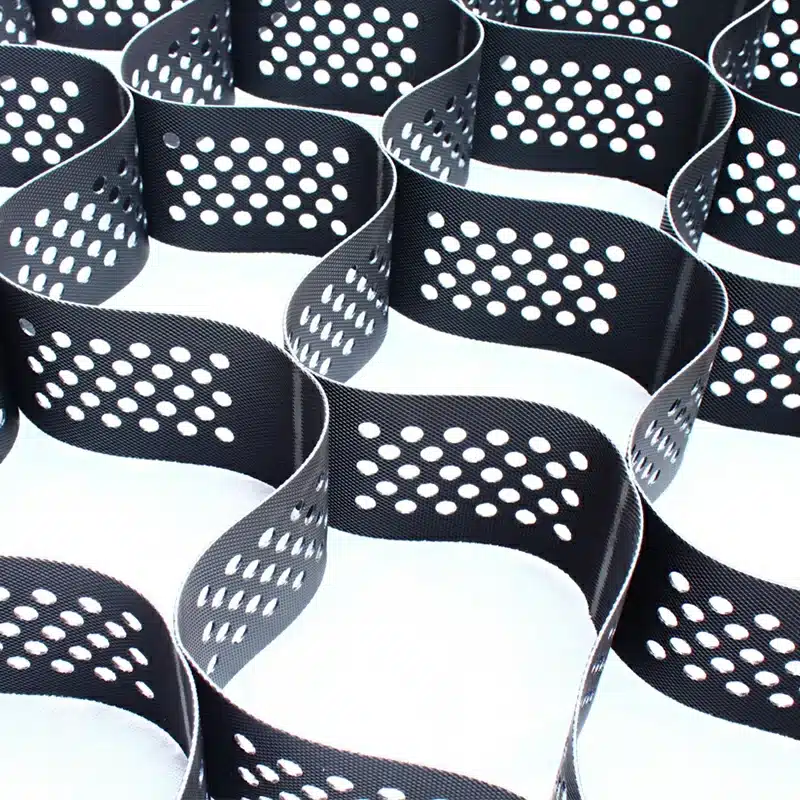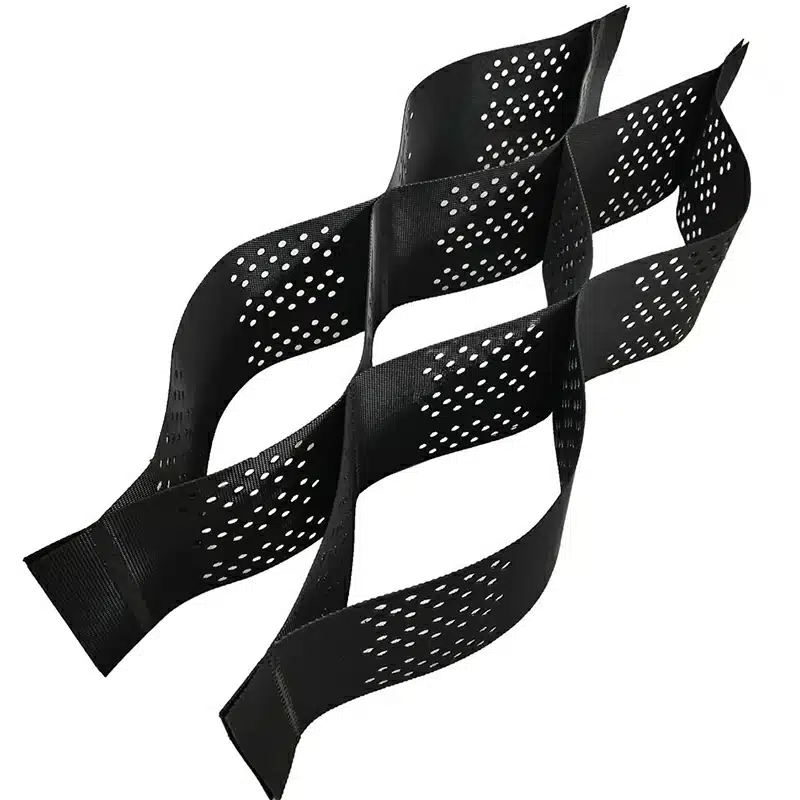+86-159 9860 6917
info@geofantex.com
geofantex@gmail.com
+86-400-8266163-44899
In the ever-evolving field of civil engineering, the quest for materials that are not only durable and sustainable but also cost-effective and capable of withstanding the demands of road construction has led to the adoption of innovative technologies. Among these, geocell technology emerges as a standout, revolutionizing road construction with solutions that are flexible, durable, and able to bear heavy loads without damage. This transformative approach not only enhances the longevity and performance of roads but also underscores the industry’s shift towards more resilient infrastructure. This article delves into the fascinating world of geocells, exploring their versatile uses, robust materials, distinctive characteristics, and the foundational principle of geocell reinforcement in the context of road construction.

What is a Geocell Used For?
Geocells are employed principally to bolster the structural integrity of roads, functioning as a foundational layer that distributes loads evenly and mitigates pressure on the underlying soil. This crucial role not only amplifies the durability of roads but also wards off prevalent issues like rutting, cracking, and potholes. Beyond road construction, geocells are adept at erosion control, soil stabilization on both flat ground and steep slopes, channel protection, and providing structural reinforcement for load support and earth retention. This multifaceted utility makes them a versatile asset across a spectrum of civil engineering applications, from reinforcing retaining walls to safeguarding embankments.
What is the Material of Geocell?
Geocells are predominantly crafted from materials such as high-density polyethylene (HDPE) or polypropylene (PP), each a type of thermoplastic revered for its strength, durability, and resistance to chemicals and environmental stressors. These materials ensure that HDPE and PP geocells are lightweight, flexible, and capable of enduring extreme temperatures, rendering them apt for a wide range of climatic conditions. While some geocells might also incorporate polyester or other polymers to meet the unique needs of a project, the choice between HDPE and PP often hinges on the specific requirements and desired properties for the application at hand.

What are the Characteristics of a Geocell?
The defining characteristics of a geocell include its three-dimensional honeycomb-like structure, which can be large or small, and its inherent flexibility that allows it to be retracted for transportation. This unique structure enables geocells to effectively confine and stabilize soil, gravel, or concrete, thereby improving load distribution and minimizing soil erosion. The adaptability of geocells, facilitated by their ability to adjust in size for ease of transport, ensures they can be seamlessly applied to various terrains. Additionally, their permeability promotes efficient drainage, preventing water accumulation and associated damage, further underscoring their utility in diverse civil engineering contexts.
What is Geocell Reinforcement?
Geocell reinforcement, a soil reinforcement technique, is recognized for its versatility and cost-effectiveness in enhancing the strength of soft soils. This process involves using geocells to boost the load-bearing capacity of soil by confining the fill material—be it soil, sand, or gravel—within its cells, thereby creating a more stable and rigid base for road construction. Particularly advantageous in areas with weak or unstable soil, this method not only prevents deformation but also prolongs the road’s lifespan. Furthermore, geocell reinforcement has proven to be an eco-friendly and cost-effective alternative, reducing the reliance on traditional, more expensive materials and offering a versatile solution for improving soil strength.
Geocell technology represents a significant advancement in road construction, offering a durable, sustainable, and efficient solution to common engineering challenges. From their versatile application in load distribution and soil stabilization to their innovative use in reinforcement, geocells have proven to be an indispensable tool in the modern civil engineer’s arsenal. As we continue to seek better ways to build the infrastructure of tomorrow, geocells pave the way for a more resilient and sustainable future.



Get Free Sample
We’ll respond as soon as possible(within 12 hours)






















